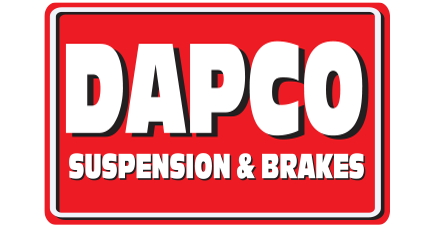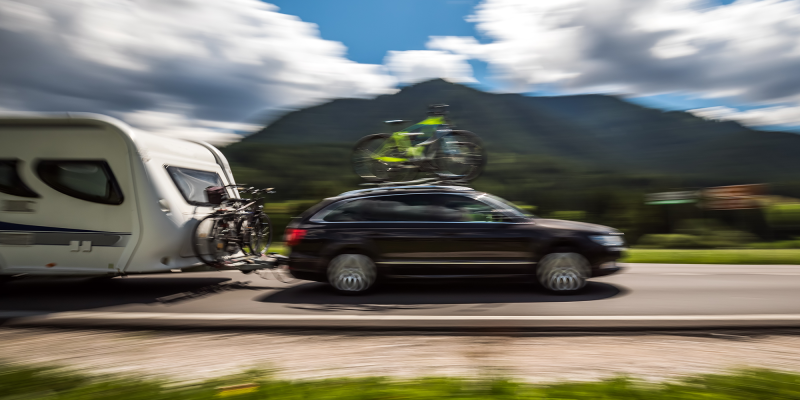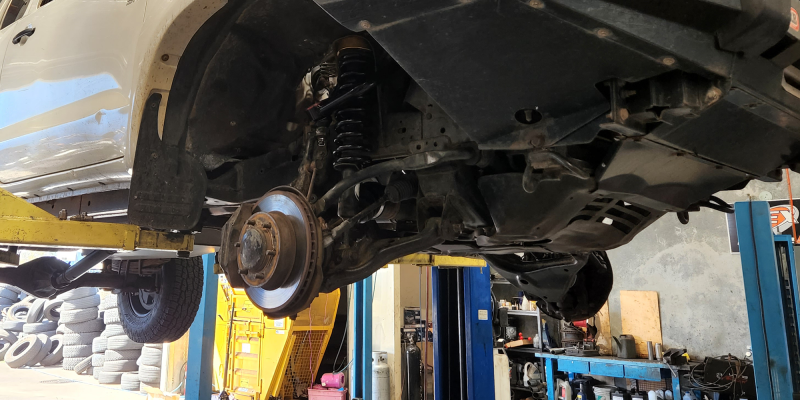Proper suspension is just as critical for your caravan as it is for your vehicle to ensure a safe and efficient towing experience. Just like your tow car, your caravan has a body and wheels that go over bumps, navigate corners, and decelerate, so you need reliable suspension.
Just like vehicle suspension, you can upgrade the load carrying capacity of your caravan with an ATM upgrade, upgrade your suspension, or get it repaired at authorised mechanics like DAPCO in Bunbury, Western Australia.
Basics of Caravan Suspension
The suspension in your caravan works similarly to the one in your car. It has springs that absorb shocks from bumps and shock absorbers (also called dampers) that prevent bouncing. Caravans usually use coil springs, leaf springs, or air springs. The dampers can be twin-tube, mono tube, or foam types – similar to what you find in cars.
Key Differences Between Caravan and Tow car Suspension
There are some key differences between caravan and tow car suspension. In a car, you’ll feel poor suspension more than in a caravan. That’s because car suspension is usually more advanced and better engineered. When you see a car towing a caravan on a bumpy road, you’ll often notice the caravan bouncing more than the car.
Why is this?
- Car suspension systems are highly engineered with careful attention to details like alignment, spring tension, and overall geometry.
- Caravan suspension often uses off-the-shelf parts put together without much customisation, resulting in lower quality and less sophisticated design.
- Poor suspension in cars is more noticeable to drivers compared to caravans, which might be why car manufacturers invest more in suspension engineering.
- Car manufacturers spend a lot of time tuning and testing the suspension for specific performance, whereas caravans might lack this detailed engineering focus.
Types of caravan suspension
Caravan suspension comes in two main types:
- Beam axle
- Independent
Beam Axle
With a beam axle, both wheels are connected to a single axle. With independent suspension, each wheel has its own axle. Independent suspension can give a smoother ride in cars, but in caravans, the benefits are less clear unless it’s well-designed.
Independent Suspension
Independent suspension does offer better ground clearance, which is helpful off road. However, even beam axle setups usually have more clearance than a car because they don’t have a differential or driveshaft.
Twin Shocks in Caravans
You might notice that many caravans use twin shocks instead of just one. This isn’t because they carry more weight. In fact, heavy trucks often use single shocks. The idea that two shocks are better is more about marketing than necessity. Good quality and design are what really matter, not the number of shocks.
Types of Caravan Springs
Caravans can have:
- Coil springs
- Leaf springs
- Air springs.
Coil Spring Suspension in Caravans
When it comes to caravan suspension, coil springs are a popular choice due to their balance of performance and comfort. Coil springs are essentially heavy-duty springs that compress and expand to absorb the shocks from bumps and uneven terrain. In a caravan, they work in tandem with shock absorbers to provide a smooth and stable ride.
In this type of suspension, the tyre is attached to the chassis on a trailing mechanical link. The arm is then put at an angle behind the connection to the chassis, giving it the “trailing arm” name. They have at least one shock absorber attached to the arm for absorbing the rebound.
The arm is designed to move up and down as the caravan travels over bumps, helping to absorb impact and evenly distribute weight. Often there are available upgrades for twin shock absorbers for caravans with this suspension type.
Leaf Spring Suspension in Caravans
Leaf springs might not be great in cars, but they work fine in trailers. If you see a caravan with leaf springs, don’t assume it’s inferior. It can still tow well if it’s well-designed.
Leaf spring suspensions are a traditional suspension type that has existed for many years. They help support the weight of the vehicle and locate the axle. This suspension type is made up of multiple spring steel leaves that are joined together in a pack and attached to the vehicle frame at one end, then to the axle on the other side.
Some variants, such as rocker roller leaf springs, have equalisers in the centre. Eye-to-eye leaf spring setups may also be used to support higher loads with both sides being bolted in circular loops – otherwise known as the “eyes.” Leaf spring suspensions are known to not always be the best for trailers.
Air Spring Suspension in Caravans
Air springs are great because they can level themselves at campsites and adjust for offroad or onroad driving. They are more expensive and a bit less reliable than steel springs, but still reliable enough for most people.
Air springs, or airbags, are made of rubber bags that get inflated to change the spring rate. They can be made of either convoluted bags or rolling sleeve bags. Convoluted bag systems use two or more convoluted air springs, while rolling sleeve bags are usually used more in an industrial setting or as additional support for a Ute.
Rolling sleeves are known to be more versatile. Both types use air pressure from a compressor and have good shock absorption qualities. This type of suspension system is great for making adjustments if there are slopes being parked on or if there are uneven loads in the caravan since each side can be adjusted individually. This helps prevent the vehicle from leaning too much to one side.
Start Your Next Journey with the Right Suspension System
DAPCO Bunbury is ready to inspect, repair, and upgrade your caravan and trailer ATMs. Schedule your caravan suspension repairs and upgrades today and get your suspension in peak, comfortable condition!




